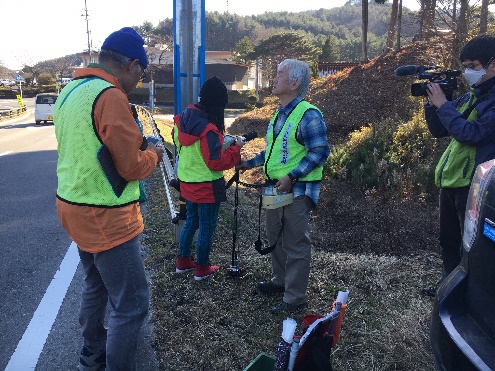High radiation levels were observed near the “J Village” soccer facility in Fukushima Prefecture, which is intended to be the starting point for the Olympic torch relay for the Olympic Games Tokyo 2020. Greenpeace Japan took readings of radioactivity levels from October to November 2019 between a forested area and a parking lot owned by Naraha Town adjacent to J Village, finding 71 microsieverts per hour at ground level and 1.7 microsieverts per hour one meter above the ground. After being notified of these findings, Japan’s Ministry of the Environment confirmed similar numbers.
Later, when Fukushima Prefecture took readings along the torch relay route and roadside, the maximum values were 0.46 microsieverts per hour on the roadway (Koriyama City) and 0.77 microsieverts per hour beside the road (Iitate Village). This is much more than the public exposure limit of 1 millisievert per year (0.11 microsieverts per hour, or 0.23 microsieverts per hour based on national government calculations and decontamination standard). The average of the monitoring sites was highest in Iitate Village, and the average dose at 404 sites was 0.25 microsieverts. The readings at about half the sites were above 0.23 microsieverts per hour.
According to surveys by Radioactivity Monitoring Center for Citizens (Chikurinsha) and the Fukushima Daiichi Area Environmental Radiation Monitoring Project along the torch relay route and 69 nearby sites, readings exceeded 0.23 microsieverts at 62% of all survey sites. One site in Iitate had an extremely high level of soil contamination, at 2.14 million Bq/m2. Other locations showed high soil contamination levels, exceeding 1 million Bq/m2 at three sites in Okuma Town, three in Iitate Village, and one in Kawauchi Village.
Chikurinsha’s vice-chair Kazumasa Aoki commented: “People also live along the torch relay route. Fukushima Prefecture says that if a person spends four hours in Iitate Village (which had the highest readings along the route) they will only get 0.0033 millisieverts of exposure, and they claim that this is no problem. But that means 6.57 millisieverts per year for residents, which is more than six times the safe public exposure limit.”

